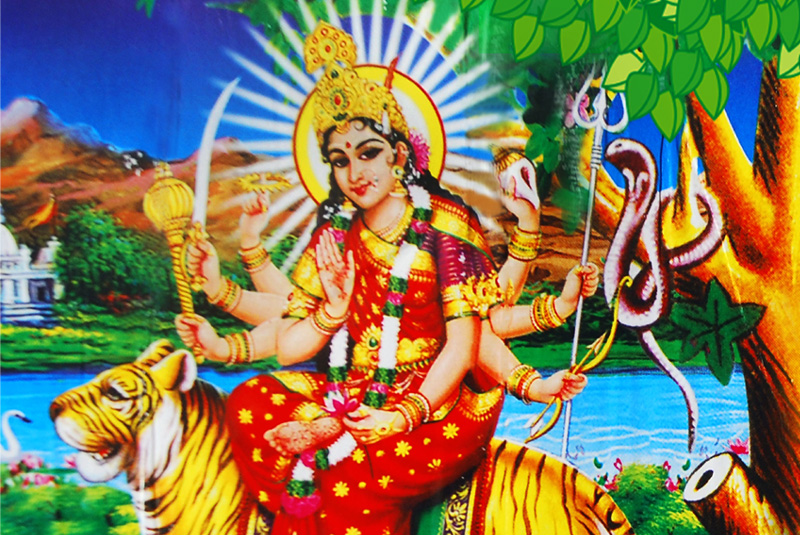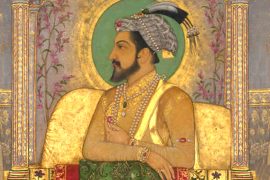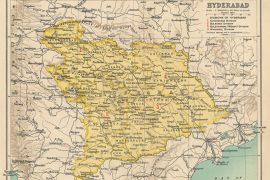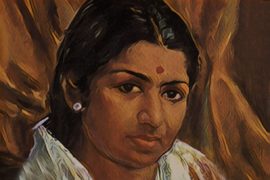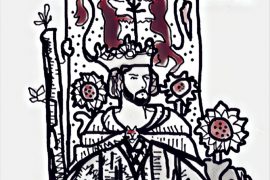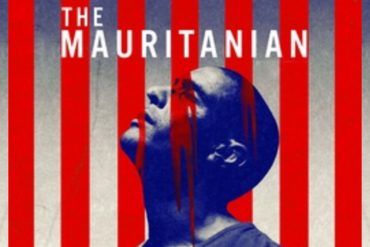In the thirteenth-century, on a moonlit night in the Dandakaranya forest, a group of hunters belonging to the Koya tribe, found a newborn baby girl. From a distance, they noticed she was playing with a tiger. The hunters managed to her take her away from the tiger and took her back to their settlement.
The leader of the tribe, who felt she was divine child, adopted the baby and named her Sammakka. But the story of her birth remains a mystery. No one knows where she came from or why she was playing with a tiger. However, many in the Koya settlement believed Sammakka possessed healing powers.
When she grew up, Sammakka’s adopted father got her married to a feudal Koya tribal chief named Pagididda Raju. The couple had three children–two daughters named Saralamma and Nagulamma, and a son named Jampanna.
Jayadheer Tirumala Rao, an academic who gathered oral histories of the Koyas, says Pagididda Raju had to pay taxes to King Prarapa Rudra, the ruler of the Kakatiya kingdom. Unfortunately, a severe drought made it impossible to pay taxes. However, King Pratapa Rudra, the ruler of the Kakatiya kingdom, remained adamant. He sent his army to intimidate and blackmail the Koya tribe.
This led to a fierce battle on the banks of Sampangi Vagu, a tributary of the Godavari River. Pagididda Raju, his daughters and son-in-law Govinda Raju (Saralamma’s husband) were killed. Sammakka’s son, Jampanna, bled to death, causing the stream to turn red. Since his death, it was renamed as Jampanna Vagu.
Hearing the news, Sammakka went into battle and fought until the Kakatiya army began to retreat. Stunned by her valour, a Kakatiya general visited her with a peace treaty and offered her a place in the emperor’s harem as an empress. Sammakka declined the offer and continued the fight, only to be mortally wounded in the battle.
She cursed the Kakatiya dynasty and prophesied that it would perish. Soon after, she went into the forest and disappeared. The Koyas looked tirelessly for their queen. But they could only find a red box containing vermilion, bangles and the mark of a tigress at the place where she was found as a child.
In the next few years, Pratapa Rudra faced a humiliating defeat. He was killed by the Tughlaqs and the Kakatiya dynasty ended.
This legend is passed on orally by the Koya tribe.
As they consider Sammakka and Saralamma to be divine beings, they celebrate the Sammakka Saralamma jatara, which lasts for four days. The first day marks the advent of Saralamma from Kannepally (village) to the gadde (a high raised platform made of soil), in Medaram. The second day marks the advent of Sammakka from Chilakala Gutta (village). On the third day, the devotees offer their prayers to the goddesses by offering jaggery. It is also customary for the devotees to bathe in the Jampanna Vagu. The devotees are allowed to make their offerings only after they follow this custom.
The last day, ‘Sammakka Saralamma Vanapravesham’ (forest entry), is said to mark the return of the goddesses into the forest. Devotees believe that a tiger prowls in the surrounding areas of the forest once the goddesses are left behind.
The goddesses–symbolised by bamboo shoots in rice fields, clad in sarees, covered with saffron and vermilion–represent Saralamma and Sammaka, respectively. The devotees make offerings of jaggery and coconuts by throwing them towards the rice fields where the goddesses sit. To protect themselves from the coconuts hurled at the goddesses, priests wear helmets and other protective headgear.
The festival, until 1955, had only 2,000 worshippers. But over the years, the Samakka Saralamma Jatara, a tribal festival celebrated by the Koya tribe, has gained popularity. Now, it is celebrated by people in Andhra Pradesh, Telangana, Madhya Pradesh and Chattisgarh.
In 1999, the government of Andhra Pradesh declared the jatara a state festival. To enable worshippers to reach the Medaram village, it mapped the roads leading to Medaram and built infrastructure for easier access. But there is a flip side to this: reduction in forest cover and disruption of natural environment. In February 2020, more than 13 million people visited the jatara. Now, it is considered to be the largest tribal gathering in Asia.
The Sammakka Saralamma Jatara is in danger of being appropriated by Hinduism. The greatest fear of tribal communities is the appropriation and cultural obliteration of what is a tribal celebration.
Today, the Sammakka Saralamma jatara is being considered for the UNESCO list of Intangible Cultural Heritage (ICH) elements of India. This has caused many to wonder if nationalisation will bring about the end of this indigenous celebration.
-30-
Copyright©Madras Courier, All Rights Reserved. You may share using our article tools. Please don't cut articles from madrascourier.com and redistribute by email, post to the web, mobile phone or social media.Please send in your feed back and comments to editor@madrascourier.com

